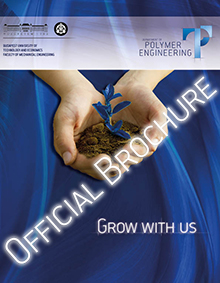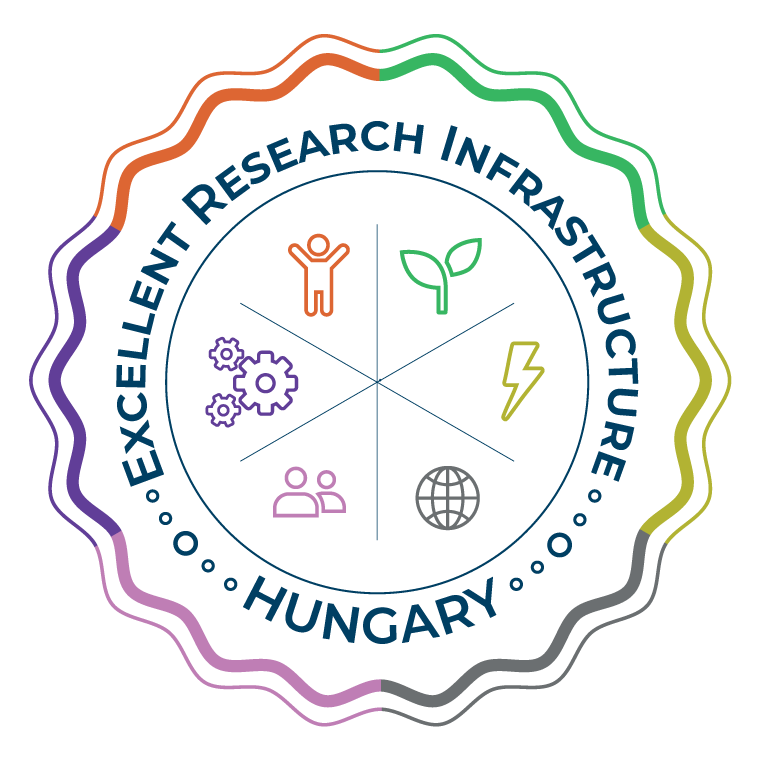Development of PEM fuel-cell stacks for utilization of hydrogen from renewable sources
Dr. András Suplicz
Dr. András Suplicz
Magyar Tudományos Akadémia, Természettudományi Kutatóközpont
Flaar Kft.
Project summary
One of the most promising energy carriers of the future is hydrogen, which is environmentally friendly because it produces water by reacting with oxygen to produce energy. The most efficient way to convert the chemical energy stored in hydrogen the use of fuel cells. Catalytic electrodes, which generally consist of activated carbon and platinum, are the most important components of low-temperature fuel cells. The porous structure of the activated carbon (carrier) ensures that the catalytic platinum - applied to its surface – and the fuel come into contact on the largest surface. The carrier must also be an electrical conductor to pass through the electrons generated in the catalyst reaction. An important requirement for the catalyst is the long service life. In applications with high demands, such as vehicles where frequently varying power demands, accelerations-decelerations, stoppages-start-ups destroy their structure, the stability of the activated carbon-platinum combination is unsatisfactory. Our research aims to develop a new, more resistant catalyst. We plan to combine the carbon carrier with titanium dioxide, which has a stronger interaction with platinum and is modified with other metals (molybdenum, tungsten, niobium) to provide proper electrical conductivity. Another important component of fuel cells is the bipolar plate, which provides the connection of the components of the device. Instead of the conventional less acid-resistant metal bipolar plates, we design new plastic based bipolar plates. The purpose of the new process is to achieve higher filler contents and thus better conductivity compared to conventional injection molded ones. We expect that from the new type of components a more stable and cheaper fuel cell can be built.
Project results
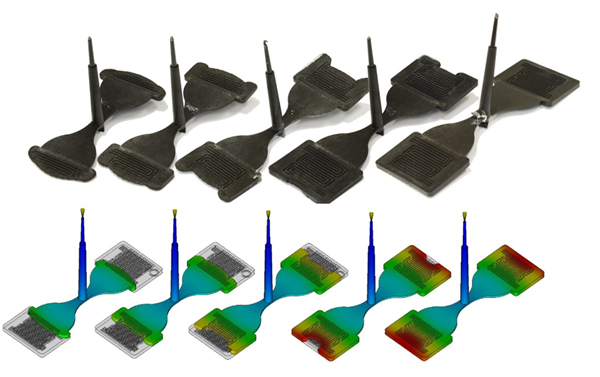
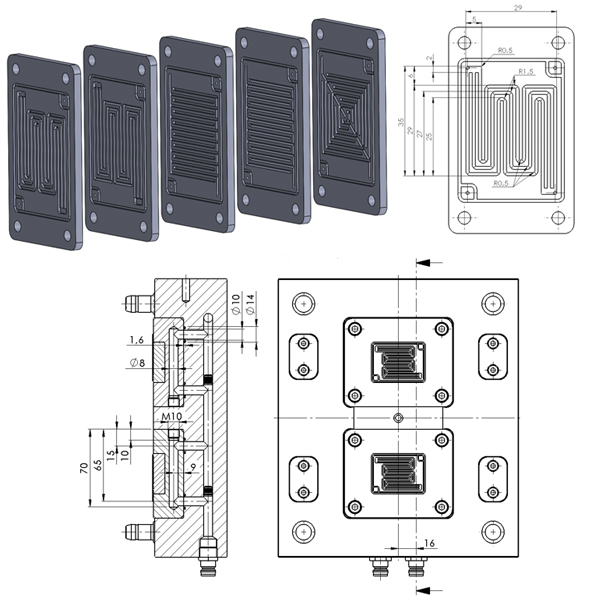
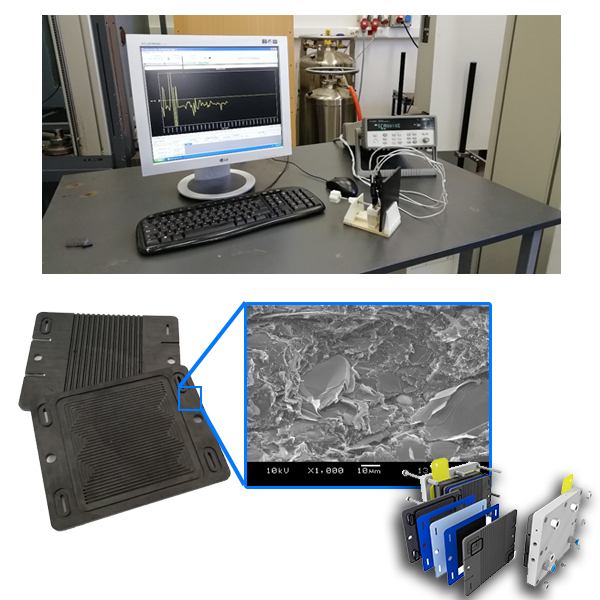
Project-related publications
- Semperger O. V., Suplicz A.: The effect of the titanium dioxide nanoparticles on the morphology and degradation of polyamide 6 prepared by anionic ring-opening polymerization. Polymer Engineering and Science, 62, 2079-2088 (2022) 10.1002/pen.25990 IF=3.2 Q2
- Zink B., Kovács J. G.: Pressure‐dependent heat transfer coefficient measurement for thermoplastic melts. Polymer Engineering and Science, 62, 1137-1146 (2022) 10.1002/pen.25912 IF=3.2 Q2
- Ageyeva T., Kovács J. G., Tábi T.: Comparison of the efficiency of the most effective heterogeneous nucleating agents for Poly(lactic acid). Journal of Thermal Analysis and Calorimetry, 147, 8199-8211 (2022) 10.1007/s10973-021-11145-y IF=4.4 Q1
- Török D., Ageyeva T., Boros R., Kovács Á., Kovács J. G.: Developing a method for evaluating color changeover in a hot-runner multi-cavity injection mold. Polymer Testing, 115, 107759/1-107759/9 (2022) 10.1016/j.polymertesting.2022.107759 IF=5.1 D1
- Boros R., Ageyeva T., Golcs Á., Krafcsik O. H., Kovács J. G.: Plasma treatment to improve the adhesion between ABS and PA6 in hybrid structures produced by injection overmolding. Polymer Testing, 106, 107446/1-107446/11 (2022) 10.1016/j.polymertesting.2021.107446 IF=5.1 D1
- Török D., Zink B., Ageyeva T., Hatos I., Zobač M., Fekete I., Boros R., Hargitai H., Kovács J. G.: Laser powder bed fusion and casting for an advanced hybrid prototype mold. Journal of Manufacturing Processes, 81, 748-758 (2022) 10.1016/j.jmapro.2022.07.034 IF=6.2 Q2
- Tábi T., Pölöskei K.: The effect of processing parameters and Calcium-stearate on the ejection process of injection molded Poly(Lactic Acid) products. Periodica Polytechnica-Mechanical Engineering, 66, 17-25 (2022) 10.3311/PPme.18246 IF=1.3
- Rajamani P. K., Ageyeva T., Kovács J. G.: Personalized mass production by hybridization of additive manufacturing and injection molding. Polymers, 13, 309/1-309/19 (2021) 10.3390/polym13020309 IF=4.967 Q1
- Semperger O. V., Pomlényi P., Suplicz A.: Felület-bevonatolási eljárás T-RTM technológiához. Polimerek, 7, 186-192 (2021)
- Krizsma Sz. G., Kovács N. K., Kovács J. G., Suplicz A.: In-situ monitoring of deformation in rapid prototyped injection molds. Additive Manufacturing, 42, 102001/1-102001/8 (2021) 10.1016/j.addma.2021.102001 IF=11.632 D1
- Szuchács A., Ageyeva T., Boros R., Kovács J. G.: Bonding strength calculation in multicomponent plastic processing technologies. Materials And Manufacturing Processes, 36, 151-159 (2021) 10.1080/10426914.2021.1948052 IF=4.783 Q2
- Szabó F., Suplicz A., Kovács J. G.: Development of injection molding simulation algorithms that take into account segregation. Powder Technology, 389, 368-375 (2021) 10.1016/j.powtec.2021.05.053 IF=5.64 Q1
- Krizsma Sz. G., Suplicz A.: Additív gyártástechnológiával előállított fröccsöntő szerszámbetétek üzem közbeni deformációinak vizsgálata. Polimerek, 7, 155-160 (2021)
- Tábi T., Ageyeva T., Kovács J. G.: Improving the ductility and heat deflection temperature of injection molded Poly(lactic acid) products: A comprehensive review. Polymer Testing, 101, 107282/1-107282/36 (2021) 10.1016/j.polymertesting.2021.107282 IF=4.931 D1
- Boros R., Sibikin I., Ageyeva T., Kovács J. G.: Development and Validation of a Test Mold for Thermoplastic Resin Transfer Molding of Reactive PA-6. Polymers, 12, 976/1-976/13 (2020) doi:10.3390/polym12040976 IF=4.329 Q1
- Semperger O. V., Suplicz A.: The effect of titanium dioxide on the moisture absorption of polyamide 6 prepared by T-RTM. in '12th Hungarian Conference on Materials Science Balatonkenese, Magyarország. 2019.10.13-2019.10.15,8 (2020)
- Suplicz A., Boros R., Semperger O. V.: Investigation of the interfacial adhesion of glass bead-filled multicomponent injection moulded composites. in '12th Hungarian Conference on Materials Science Balatonkenese, Magyarország. 2019.10.13-209.10.15,7 (2020)
- Fris D. R., Szabó F.: Modelling of segregation during injection moulding. IOP Conference Series: Materials Science and Engineering, 903, 012022/1-012022/8 (2020) doi:10.1088/1757-899X/903/1/012022
- Semperger O. V., Suplicz A.: The Effect of the Parameters of T-RTM on the Properties of Polyamide 6 Prepared by in Situ Polymerization. Materials, 13, 4-14 (2020) 10.3390/ma13010004 IF=3.623 Q1
- Fris D. R., Szabó F.: Hálófinomítási eljárás fejlesztése fröccsöntési szimulációs alkalmazásokhoz. in 'XXVIII. Nemzetközi Gépészeti Konferencia – OGÉT 2020 Online, . 2020.04.25.-2020.04.26,57-60 (2020)
- Suplicz A., Semperger O. V., Kovács J. G.: Modeling the Thermal Conductivity Inhomogeneities of Injection-Molded Particle-Filled Composites, Caused by Segregation. Polymers, 11, 1691/1-1691/12 (2019) 10.3390/polym11101691 IF=3.426 Q1
- Semperger O. V., Suplicz A.: Titán-dioxid hatása az in-situ polimerizációval előállított poliamid 6 minták tulajdonságaira. Polimerek, 5, 730-733 (2019)
- Semperger O. V., Suplicz A.: Titán-dioxid hatása az in-situ polimerizációval előállított poliamid 6 minták tulajdonságaira. in 'XXVII. Nemzetközi Gépészeti Konferencia OGÉT 2019 Nagyvárad, Románia. 2019.04.25.-2019.04.28,472-475. (2019)
- Zink B., Kovács N. K., Kovács J. G.: Thermal analysis based method development for novel rapid tooling applications. International Communications in Heat and Mass Transfer, 108, 104297/1-104297/9 (2019) 10.1016/j.icheatmasstransfer.2019.104297 IF=3.971 Q1
- Ageyeva T., Sibikin I., Kovács J. G.: A Review of Thermoplastic Resin Transfer Molding: Process Modeling and Simulation. Polymers, 11, 1555/1-1555/28 (2019) 10.3390/polym11101555 IF=3.426 Q1


